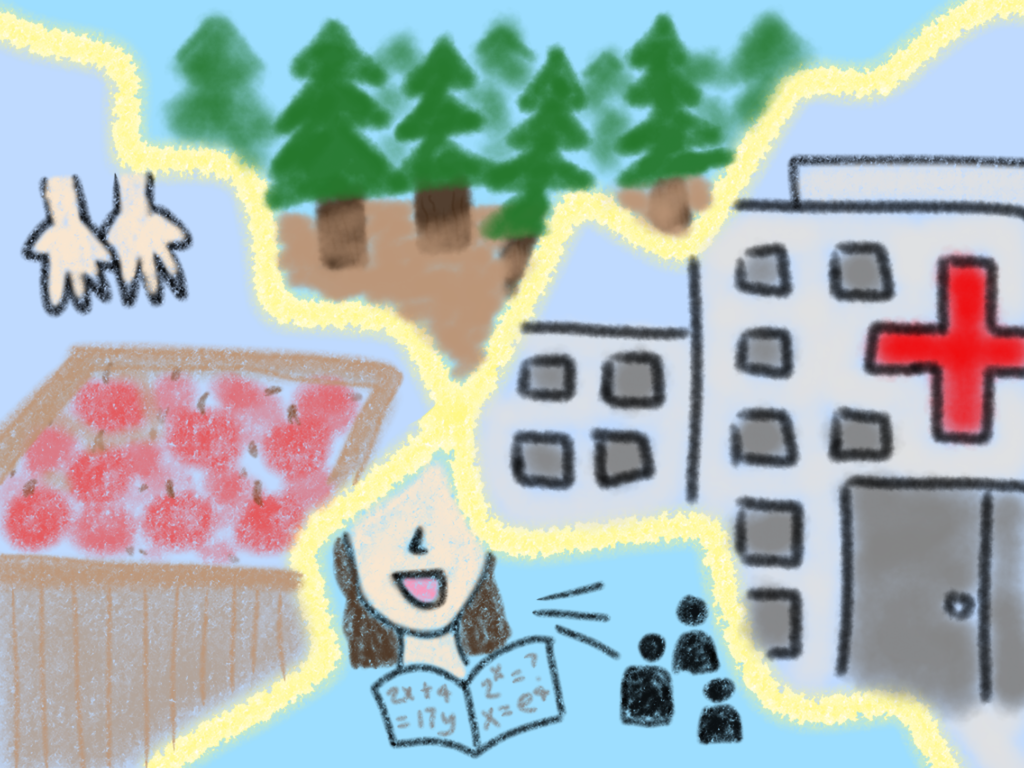In the 9.5 weeks of summer when you aren’t confined in a stuffy classroom, endless possibilities abound for how to spend your free time. Some students attend summer programs at universities to further their passion in a field, while others take a relaxing vacation to a distant country and some stay home to enjoy the comfort of doing nothing.
Whether or not you have something planned this summer, you may be thinking about putting aside some of your time for volunteering (yes, even those with a 6-week biotech internship). This is the perfect guide to gain some ideas on where to volunteer, how to apply, how to log hours and what awards are available. With so many organizations that need help, there is always something you can do to help the community and build your personal skills at the same time.
Common volunteer opportunities
For those interested in the outdoors, various California State Parks located in Santa Cruz and Big Basin have single-day volunteer opportunities, such as beach and trail clean-ups. They also offer long-term positions, where you can interact with visitors, maintain signs and fences, pull weeds or plant new species, restore trails and more. Even if you have a busy summer schedule, the volunteer page assures that hours for most volunteer positions are quite flexible. All application and contact information are listed on the website.
“Trust me, [trail building] is back-breaking work,” College and Career Center (CCC) counselor Brad Ward said. “I’ve seen it up in the Sierra — these people stay in cabins or tents overnight and then go out on the trail with pickaxes, and they’re moving rocks and trimming trees. It’s a lot of work but if you love the outdoors, there is no better place to be.”
For those interested in working in health care, look no further than your closest hospital. Kaiser Permanente, El Camino Health and Sutter Health all have opportunities open to high school students. Tasks include greeting visitors, assisting with wheelchairs, helping to discharge patients and providing amenities to patients and families.
Some hospitals require volunteers to commit to a minimum period of 6 months to 1 year, so be prepared to extend your volunteer period into the school year when you apply. High school volunteers are typically expected to stick to a consistent schedule of 2-4 hours per week, depending on the hospital. Additionally, there may be a minimum age requirement of at least 16 for some locations.
Junior Kavya Reddy does a variety of work in her volunteer hours in the lobby of Kaiser: Her duties include giving visitors proper identification, escorting them to appointments and assisting with wheelchairs.
“It helps me see how the hospital works and what the daily lives are like for doctors and nurses,” she said. “And I can see if that’s the life I want if I want to pursue medicine.”
For those interested in academic volunteering, Saratoga Union School District (SUSD) offers summer school Teaching Assistant positions for all incoming high schoolers. It does not require advanced academic skills; volunteers help the teacher prepare materials and work with kids. Held on weekdays at Argonaut Elementary School, these academic and enrichment classes are an annual summer opportunity. Online applications are available from the spring until all positions are filled.
For those interested in low-commitment volunteer opportunities that don’t put you on a weekly schedule, try signing up for a 2-hour slot at Second Harvest of Silicon Valley to help distribute fresh produce and poultry to people in the community. Distributions are usually located at various elementary schools; volunteer tasks include setting up tables, removing boxes from pallets, bagging frozen items and loading vehicles with food.
As someone who has volunteered with Second Harvest, I can say that the job can become physically demanding. Still, it’s absolutely worth it to see the grateful smiles and happy waves from the people who drive away with cars full of food, as well as collaborating with the other volunteers and staff to distribute all the food.
Ward advises students not to be afraid of reaching out if they want to actively improve their community. If you’re nervous about volunteering alone, simply bring a friend or a family member. If you’re not sure if you’ll enjoy volunteering, search online for volunteer organizations that align with your interests.
“There are so many people that need help, but sometimes they’re invisible, and they don’t know how to ask for help,” Ward said. “So if you connect with an organization that is [helping people] the whole time, you could just email them and say, ‘Hey, I’m interested.’ We also put a lot of opportunities in Mr. Louie’s weekly newsletter — or just ask your friends.”
Application process and logging hours
For most volunteer opportunities, the easiest way to apply is via a quick online search and an online application. For example, Second Harvest has a simple form on its website that asks for contact information and availability. Alternatively, you can call the organization or go in person to inquire for more details.
One thing to keep in mind is to plan ahead and apply early, anywhere from several weeks to several months — it’s not a guarantee that you will start immediately. For instance, Kaiser requires an initial volunteer application, followed by an interview process, health screening and orientation, all of which may take several months to complete.
“My advice is to be honest. You don’t have to have an amazing application because it’s a really safe environment,” Reddy said. “My experience with applying was that it happened pretty quickly, but I know some others have had a long time. If you’re having a hard time, I’d say just email them. They’re really friendly and they’ll get you in.”
Once you start volunteering, depending on how long term it is, you will typically log your hours at the end of your service period. Use the SHS Volunteer Hours Log to organize all your volunteering, which is located in both the CCC and on the school’s website. In each slot, include the name of the organization, hours volunteered, period in which you volunteered and a supervisor signature.
In addition to the log, you need to request a statement on the organization’s letterhead. The statement must include your name, number of hours, dates, what you did and the signature of your supervisor. Before May 1 of your senior year, turn in the hard copy of both forms to Brad Ward in the CCC.
Although volunteering is not a requirement for graduation at SHS, students who complete more than 100 hours receive recognition at Senior Awards Night. You can also apply for outside awards like the President’s Volunteer Service Award (PVSA). There are eligibility requirements for what kinds of organizations you volunteer at, and different ages have different hour requirements for Bronze, Silver, Gold and Lifetime awards.
Volunteering is a great way to show colleges you enjoy bettering the community and excel at things other than academics, but the purpose is not just for a college application. It is everyone’s role to be part of the community and it can be a fulfilling experience.
“It just feels good when you’re not being paid for something but you’re helping,” Ward said. “And you’re developing skills for life, like showing up on time if you have to be somewhere at a certain time and place, working with adults, working sometimes with challenging situations.”




























